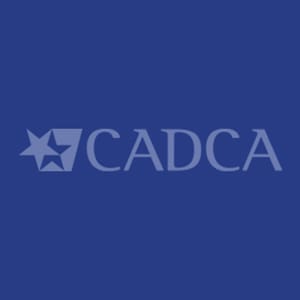
As the Drug Enforcement Administration (DEA) celebrates Red Ribbon Month, coalitions across the country are partnering with DEA to support events like Prescription Drug Take-Back Day. However, several community coalitions have been fortunate to partner with DEA not just in the month of October, but year-round as they work to provide community outreach across the nation. One of these community coalitions is Hillsborough County Anti-Drug Alliance (HCADA), a CADCA coalition that has partnered with the DEA Tampa District Office to support the DEA 360 Strategy. HCADA Associate Director Gary White and DEA Tampa’s 360 Strategy Program Outreach Coordinator Rod Cunningham spoke with CADCA about what this partnership has meant to them and their community.
“DEA developed a program called the DEA 360 Strategy to provide community outreach and resources in 20 selected communities since 2016,” said Cunningham. “Tampa was the 16th city chosen based on opioid use/misuse problems. HCADA is the drug coalition for Hillsborough County who has been the local boots on the ground to help develop local systems to attack the drug use in the community, while CADCA is the national partner for DEA 360 cities to assist in putting on a youth or adult summit, youth leadership training, and/or other youth/adult training courses for coalition work.”
“The partnership between our agencies increased our capacity to build leadership skills of high school and middle school youth spanning nearly 4,000 square miles and four counties in Central West Florida,” added White. “This collaboration is assisting to decrease a nearly 20% current marijuana/hashish use rate among our high school youth, a nearly 20% current vaporizer/E-cig use rate among our high school youth and a nearly 6% current alcohol use rate among our middle school youth.”
Both Cunningham and White credit the partnership between HCADA, CADCA, and DEA with allowing them to reach community members, particularly youth, that may have been hard or impossible to reach on their own. “It has been a wonderful experience,” said Cunningham. “HCADA has been very helpful and consistent in the planning of all our community-based events. CADCA’s team has been instrumental in providing logistical and financial support for projects and assists with best practices so that we don’t have to reinvent the process, assisting in the project’s overall success.”
Throughout the course of their partnership, both HCADA and DEA have worked to ensure that the Tampa community can use the resources and trainings they have provided to curb the impact of the opioid epidemic on their community. “The hopes of the DEA Tampa District Office are that we have provided a framework for success to our local stakeholders, which they can use to continue to empower the youth and adults in the community and encourage them to work together as a team to help minimize the misuse of opioids and other drugs; in turn, decreasing the number of drug-related deaths in the region,” said Cunningham. “It will take the entire community to truly make a difference.”
“My hope for the future of our community,” said White, “is that a generation of current middle schoolers, led by current high schoolers, can effectively apply the strategic prevention framework to improve a host of dynamic and complex community challenges. We will continue our partnership [with CADCA and DEA] by maintaining and updating our sustainability action plan activities, from DEA Drug Takeback to regularly scheduled forums for exchange of information regarding current trends and joint implementation of comprehensive community-based strategies via our coalition substance-related task forces.”
For other community coalitions that hope to emulate the partnership between HCADA and DEA, White and Cunningham had some advice. “Synergy is the secret sauce,” said White. “Thousands of youth and adults are being educated, empowered, and informed,” added Cunningham. “It takes everyone to have an impact. Understand your strengths, play your role, seek help, and change your community for the better by continuing to be vigilant in educating children on the dangers of drug use.”



